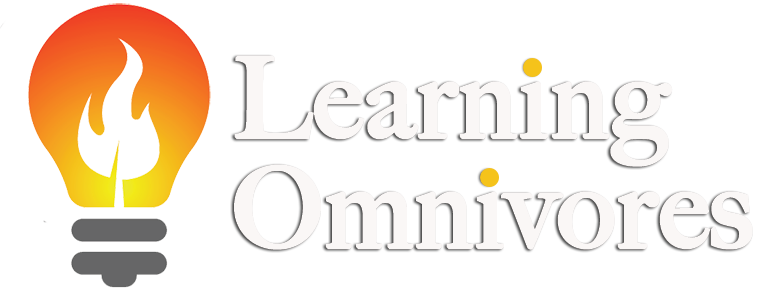Surviving Chaos
If you want to see chaos, watch a hurricane and the results when it comes ashore. 2025 promises to be more chaotic as funding, privatization, political battles, standards, etc. become unresolved issues that can and will affect school classrooms, sites, and districts. How will leaders help educators navigate the winds of change?
What we can Learn from Hurricanes? Over 30 years ago I attended a Thought Leader Gathering hosted by Craig & Patricia Neal in Minneapolis. At one event a speaker named Peter (can’t remember his last name) told a story about how some palm trees survive hurricanes. As 2025 begins, chaos may be on the horizon in many sectors. Education and educators are my focus. The story is below; brackets identify my thoughts.
Palm trees survive in three ways:
- Even though they are tall and slender, palm trees have deep roots. [What are the strong values that support leaders as they face strong political winds from many angles? How will leaders communicate internally and externally. How will leaders implement policies that are good for all students? Where will leaders get support for their vision? Tricia Griffith said, “With the right people, culture, and values, you can accomplish great things.”]
- Being tall and slender, palm trees are flexible and can bend with the winds and rain. They do not have branches or leaves to catch the wind which could more readily break the tree. [Einstein said, “creativity is more important than knowledge.” Knowledge is important and insufficient. Leaders must apply a repertoire of solutions from any source possible to address existing and new problems. Trying to solve a wicked problem with a silver bullet has not been very successful. The more flexibility and creativity a leader has, the more influence they will have to solve issues. Polarity Partnership (both/and thinking) is an additional powerful strategy.]
- Palm trees survive best in a community. A tree out on a sandbar alone does not survive at a high rate. Survival is at a higher rate when several trees are in proximity. [Leadership can be a lonely position. Creating strong teams that are psychologically safe can produce better ideas. James Suroweicki, who wrote Wisdom of Teams reports that ideas from the smartest person in the room is about 65%. When teams respond to problems, solutions are at 91%. Who and how many professionals do you want on your team? “Diversity Strengthens” says E.O. Wilson, a biologist.]
So, what can you, as a leader, do to prepare? Suggestions follow:
- Do scenario planning – two major events that may influence the chaos. For instance, flat or reduced funding on the x-axis and technology on the y-axis. This creates four scenarios. Develop responses in each quadrant to anticipate an action plan if that scenario becomes reality. This process has been used by many companies to plan forward depending on circumstances. Shell Oil reacted quickly to the oil embargoes years ago because they had done this. Learn the process and get your team working on these possibilities. Do a google search for the process. I learned it from Michael Ayers who taught this at 3M.
- Read about turnaround situations. American Icon is a book about Alan Mulally, a CEO who took over Ford at $17 billion in the red and the company was profitable in three years under his leadership. Marshall Goldsmith was his executive coach.
- Marshall Goldsmith wrote What Got You Here Won’t Get You There. Peter Drucker said, “The greatest danger in times of turbulence is not the turbulence; it is to act with yesterday’s logic.” Diversity, creativity, and commitment will go along way in producing positive responses to chaotic conditions.
- Leaders will be responsible for keeping focused on a preferred future and are a critical element in keeping hope alive for their organizations. Leaders must communicate hope and the ability to manage change internally and externally. Everyone in the organization watches the leader: what leaders permit, they promote. You will be watched and listened to. Leaders will be responsible for your tongue and your feet. The more aligned, higher trust. The more distance between tongue and feet, less trust.
- Communicate, communicate, and communicate. As Tom Lencioni wrote in Four Obsessions, one of the pillars is – OVERCOMMUNICATE. Making a statement in August is not sufficient for the rest of the year. Keep the goals and processes visible in word and actions. Every newsletter, report, and meeting will be a message about what is most important.
References:
Goldsmith, M. (2007). What got you here won’t get you there. New York: Hyperion
Hoffman, Bryce. (2012). American Icon. New York: Crown
Johnson, Barry. (1992). Polarity management. Amherst, MA: HRD Press, Inc.
Johnson, Barry. (2020). And: Making a Difference by Leveraging Polarity, Paradox or Dilemma. Volume One. Sacramento, CA: Polarity Partnerships.
Lencioni, P. (2002). The four obsessions of an extraordinary executive. San Francisco: Jossey-Bass.
Sommers, William (2024). https://learningomnivores.com/keeping-hope-alive/
Surowiecki, James. (2004). The wisdom of crowds. New York: Anchor Boos

February 3, 2025 @ 1:31 am
BusinessIraq.com stands as Iraq’s leading source for comprehensive business intelligence and economic updates, delivering real-time market insights to global investors and local entrepreneurs. Our platform provides extensive coverage of Iraq’s evolving business landscape, focusing on critical developments in oil and gas, infrastructure, and financial sectors. With expert analysis and breaking news, we ensure stakeholders remain informed about Iraq’s dynamic market opportunities.
February 21, 2025 @ 8:22 am
eKXxckB5Fj6
February 21, 2025 @ 11:47 am
7y4Cu8S0HRh
February 25, 2025 @ 8:54 am
The platform not only delivers breaking news but also features in-depth analyses and opinion pieces, ensuring that readers are well-informed. Check out the latest articles on economic policies and market developments at Iraq Business News.
February 28, 2025 @ 3:55 am
BusinessIraq.com offers specialized coverage of Iraq’s agricultural and manufacturing sectors, tracking developments in food security, industrial production, and export opportunities. Our reporting helps stakeholders identify emerging opportunities and challenges in these crucial economic sectors.